Does Heat Kill Fleas and Flea Eggs in Your Home?
Does heat kill fleas and flea eggs? It does, at both ends of the scale, but you need to use it properly to be effective. Learn how to use the heat in your home, a steam cleaner, washing machine, and bed bug warming tent to control fleas.

If you’ve ever experienced a flea infestation, you know how antagonizing they can be and how difficult they can be to get rid of. Eliminating fleas on your pet only solves one piece of the puzzle. Most of the active fleas and their eggs are living in your surrounding environment. They can survive on your pet’s bedding, soft toys, carpet, and yard.
There are many homemade remedies to treat flea infestations. You can use Borax, Diatomaceous earth, and even good old fashioned baking soda. But what about using just steam, or heat? Is it as effective as using a pest control professional to do the job?
The good news is, yes – heat can kill fleas. But there’s some specific steps you’ll need to take in order to get rid of fleas in your home for good. In the article below, we’ll take an in-depth look at what heat does to fleas. We’ll also look at what methods you can use to get rid of your problem for good.
Can You Use Heat to Kill Fleas?
Yes, heat can absolutely be used to kill fleas. It’s a very effective tactic for killing fleas at any stage of their life cycle. High heat disrupts a flea’s life cycle as long as you can keep the heat consistently high enough for a long enough period to wipe them out.
It’s also essential to keep the humidity low in addition to the high heat to kill them quickly. If the temperature is very high, but it’s nice and humid, it will take longer for the fleas to die.
Optimal Environment for Fleas to Flourish

Fleas thrive in warm climates and do best at temperatures between 70 to 85 degrees Fahrenheit. Unfortunately, they can survive in a much wider temperature range as well. In areas that reach freezing temperatures, adult fleas will be unable to survive.
However, flea eggs and larvae are not necessarily destroyed by freezing temperatures and will go dormant until temperatures rise again.
In many states, especially in the southern United States, fleas can survive all year round and wreak chaos on your pets and home.
In addition to the ideal temperature range of 70 to 85 degrees, fleas require higher humidity levels and thrive around 70 percent humidity. High humidity is necessary for flea eggs to hatch and for fleas’ survival through all life stages.
Mature fleas will always seek out a warm-blooded host that can provide them with their necessary nourishment. However, flea larvae will seek out dark crevices and cracks to hide in as they mature. Fleas look for many different types of hosts to attach to, including pets and humans.
All fleas cycles are sensitive to high heat and dehydration. They will choose shaded spots in your yard to avoid direct sunlight in hot climates. It’s important to keep grasses and bushes under control to limit the areas where fleas can hide and flourish. Providing direct sunlight to these areas will raise the temperature and decrease moisture in the soil, leading to an inhospitable environment.
If you live in an area where the climate is relatively warm and humid all-year-round, preventative treatments may be necessary.
What Temperature is Needed to Kill Fleas?

Adult fleas are unable to survive prolonged periods in temperatures above 95 degrees Fahrenheit. In hot climates with low humidity where the temperature remains above 95 degrees for more than a couple days at a time, outdoor fleas will not be able to survive. Unfortunately, controlling the climate isn’t possible.
However, we can use heat effectively inside our homes to get rid of flea infestations. The key is to use a high enough temperature for a long enough amount of time. You may consider setting the thermostat higher for a bit to eradicate these pests, but that’s not a practical approach. It takes a minimum of 48 hours at consistently high temperatures to kill fleas and their eggs.
Adult fleas may be unable to survive in temperatures above 95 degrees. Flea eggs and larvae can survive temperatures up to 103 degrees. The temperature needs to be above 103 degrees with humidity below 75 percent to eradicate adult fleas and their eggs.
How to Kill Fleas with Heat
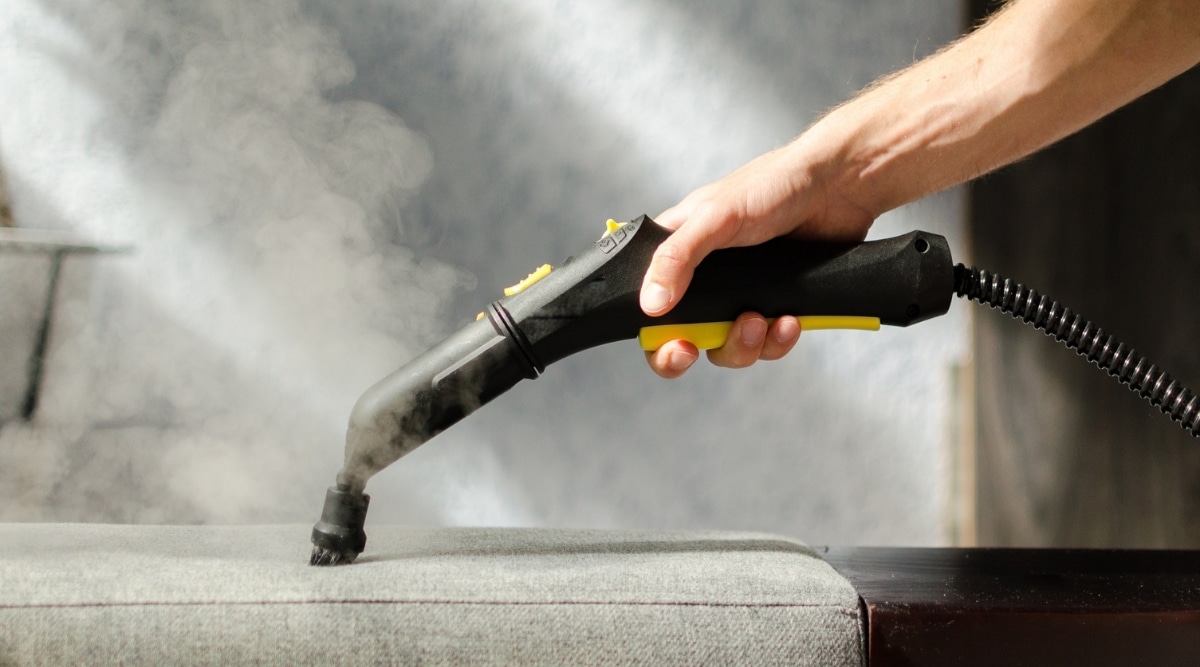
To kill all the fleas and flea eggs within your home with heat, you’ll have to use multiple methods to take care of each area of your home. There are several methods you can use to tackle the problem. Some ways are more straightforward than others, and others may require you to hire a professional.
Failing to treat every area may result in a return of the infestation if some fleas survive. It’s very difficult to achieve the high heat necessary to kill fleas in all life cycle stages throughout your entire home. You may need to use multiple methods, as it’s hard to use one method and get rid of all fleas.
A combined plan using high heat, other types of treatments, and preventative measures will likely be necessary to treat an infestation. If pets are carrying fleas, you’ll need to treat them and consider a preventative medication for keeping the fleas away. It’s impossible to treat your yard outside for fleas using heat. Without preventative measures or treatments explicitly made for lawns, the problem will likely come back.
Here are some of the most effective methods of using heat to eradicate your flea infestation inside your home.
Washing and Drying
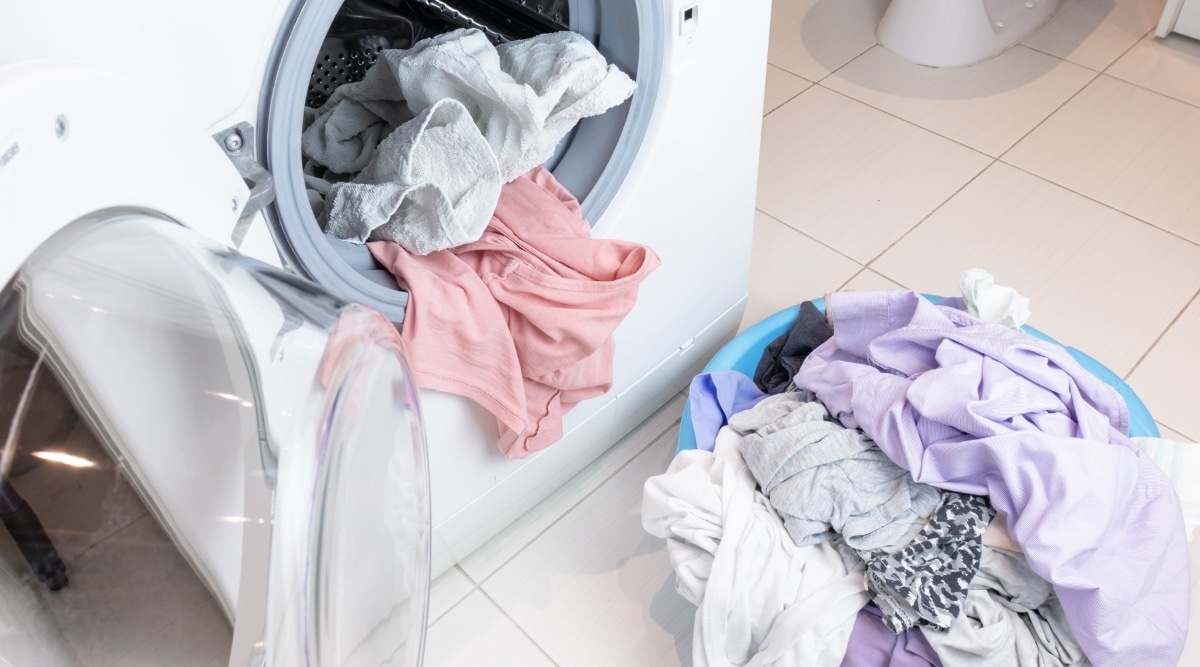
One of the easiest and most accessible ways to eradicate fleas is the washer and dryer you likely have in your home.
For bedding, clothing, and soft toys, the simplest way to use heat to kill fleas is to wash and dry them using the highest temperature setting. Wash your fabric items on the longest and hottest settings using diluted bleach, Dawn dish soap, or your favorite detergent.
The hot water and detergent are an effective combination for killing fleas. Fleas will have trouble surviving the high temperature, and the surfactants in the detergent will aid in drowning the fleas.
Once the wash cycle is completed, immediately switch your items over to the dryer. Again, use the highest temperature setting and set the dryer cycle to run for at least 30 minutes.
Fleas cannot survive a dryer that’s on the highest setting. Any fleas that miraculously made it through the washer don’t stand a chance. Not only is it the heat of the dryer that kills the fleas, but the lack of humidity inside the arid dryer quickly causes desiccation. The tumbling tears fleas, larvae, and eggs apart.
The washer and dryer are the best way to kill fleas and their eggs on all items in your home that you can launder.
Steam
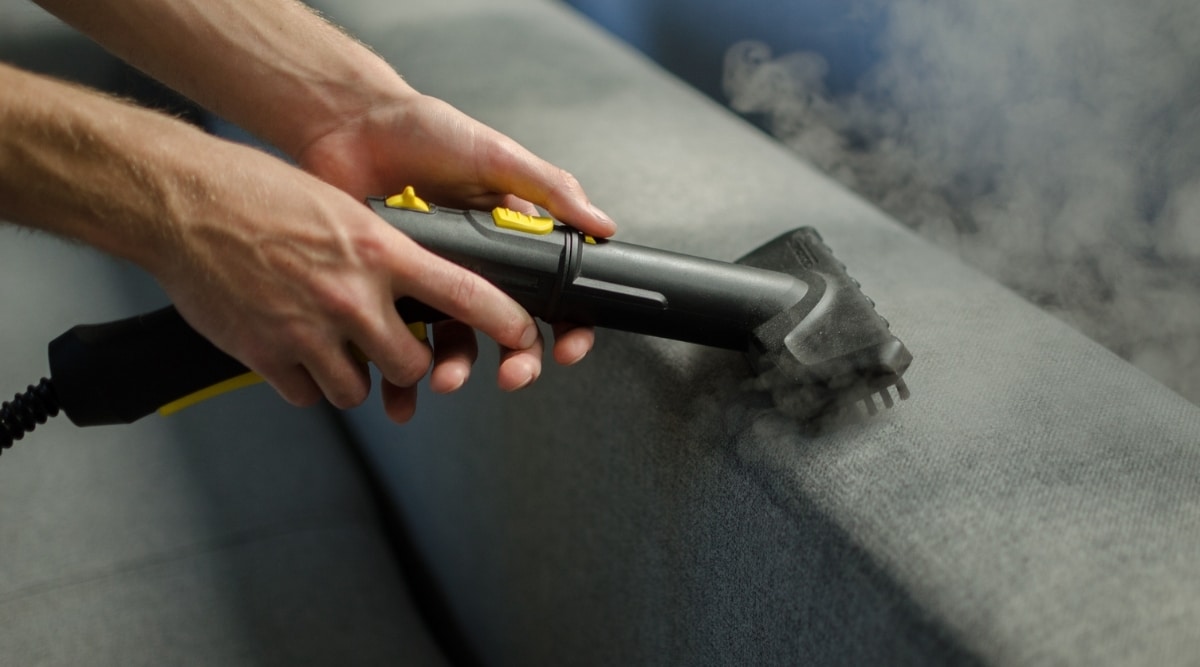
Cleaning with steam is a beneficial and chemical-free way to kill fleas that also gives your home a good cleaning at the same time. Steam cleaning works well for carpet, rugs, upholstery, and the hard surfaces in your home. Steaming will kill fleas at any stage of the life cycle.
To kill fleas, units for home use may not be powerful enough, and you may need a professional or commercial steamer to eradicate the fleas. Even with a commercial unit, the steamer likely won’t get all the fleas and their eggs the first time. You will probably have to repeat the process to catch what you missed or those who survived the first round.
Steaming is a much more effective method for picking up eggs and larvae than vacuum cleaners. You’ll have to be, though, with steamers that go higher than 180 degrees. Too high temperatures can damage surfaces, so make sure to test the steamer on inconspicuous areas first.
Using a steamer also poses certain risks for injury. Make sure you understand how to handle the steamer to avoid scalding yourself.
High-quality steamers can reach temperatures of 200 degrees or more. This temperature is more than high enough to kill fleas and their eggs. The key to this method is to take your time and go slowly.
It only takes a few minutes to kill fleas at high enough temperatures. But if you go too quickly, you’ll have to do it again to catch any strays. Pay special attention to any surfaces that aren’t smooth, like carpet and rugs. Move extra slowly across these areas, so the steam has the opportunity to penetrate deep into the fibers.
You can use steam virtually anywhere in your home. It’s a great weapon against fleas, as long as you are meticulous in coverage.
Direct Light
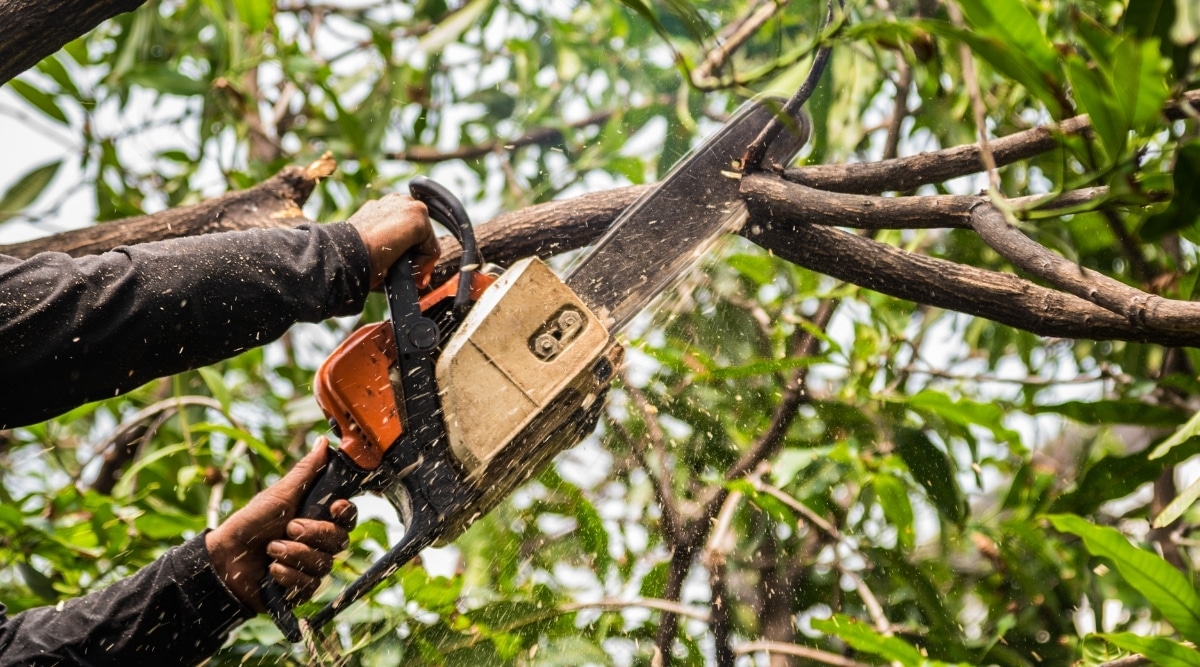
The best way to fight fleas outdoors with heat is to attempt to provide as much direct light to your lawn as possible. Direct sunlight increases the temperatures where fleas are lurking and reduces the moisture around them. Lack of humidity and high temperatures are effective at providing an inhospitable environment for fleas.
Ensure your soil gets dry enough and that there’s enough direct light to minimize flea populations by keeping bushes to a minimum or by completely cutting them down. Cut your grass often as well. By not letting it get too long, fleas can’t use it to hide and get shade.
Don’t keep garbage or piles of wood or scrap materials around your home. Fleas like to find warm and moist areas like these to lay their eggs. If your yard is in direct light, the soil is kept as dry as possible. This way there’s nowhere for fleas to hide, you have a greater chance of reducing or eliminating their population.
Bed Bug Heaters
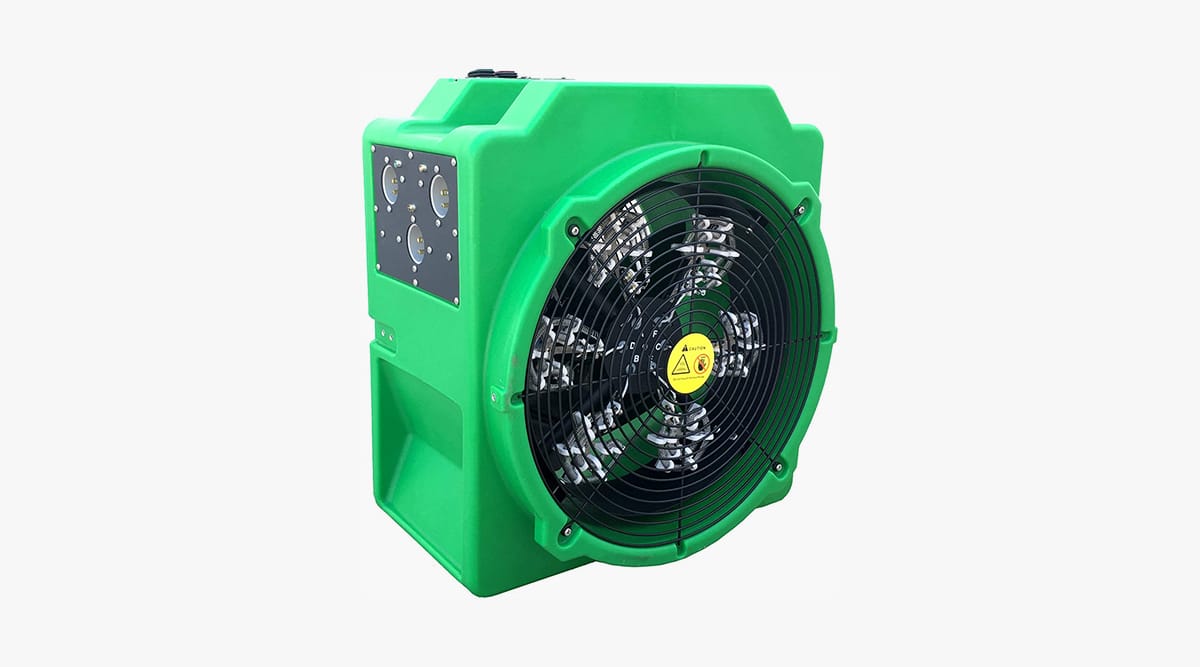
Bed bugs require a temperature of at least 120 degrees to kill them. This is high enough also to kill fleas and their eggs. Bed bug heaters come in different sizes to accommodate nearly any item in your home.
When you place an item in the bed bug heater, it needs to run for several hours to exterminate the bugs inside it fully. It works well because of the high temperature and dry climate inside the heater.
The bed bug heater will work well on each item placed in it, but it doesn’t take care of surrounding areas like the carpet. So while you’re using the bug heater, you’ll need to use another method for cleaning the rest of your house. The downside is that bed bug heaters can be quite expensive, especially for the larger size chambers.
Professional Heat Treatments
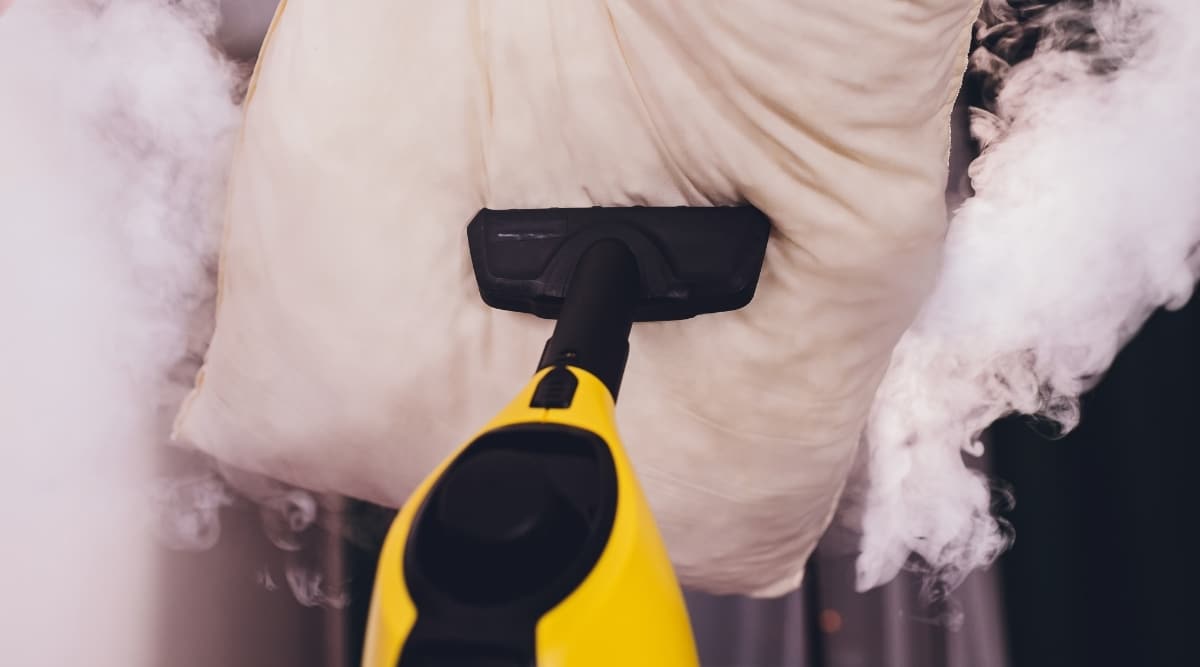
If you don’t want to deal with all the work these methods take, a good option is to go ahead and hire a professional to perform your heat treatments. Professionals will have the latest and most effective equipment and tools at their disposal, and they’ll take care of all the work.
Most heat treatment plans from professionals are targeted for bed bugs, but the temperatures required for bed bugs will also take out fleas and their eggs. Professionals have the right equipment, like commercial heaters and fans, to properly raise your home’s internal temperature to the necessary temperature needed to eliminate these pests from every surface.
Depending on the method and equipment, the process may take several hours to a couple of days. Professionals are trained in effectively doing this without causing damage to your home.
Hiring a professional can be expensive, but you won’t have to purchase any equipment yourself, like steamers or bed bug heaters, and you won’t have to put in the work. Hiring a professional will also give you peace of mind in knowing that they’re using the most effective equipment and techniques so you can get the best results.
If you feel at all uncertain about taking on this process by yourself or about the amount of work it will take, it may be best to hire a professional to get the job done.
Wrapping Up
High heat is a very effective way to destroy fleas in your home, but if you live in a climate that is ideal for fleas, it can’t be your only tactic. It’s crucial to get to your infestation source, whether that’s your pet or your backyard. High heat is not a viable option for treating pets for fleas, and it’s nearly impossible to treat your yard with heat in a consistent way.
Preventative measures, along with heat treating the items and surfaces in your home, is the most effective way to treat flea infestations. But understanding the conditions that fleas flourish in and how high heat affects fleas in every stage of the life cycle can empower you on your mission to keep your home and pets flea-free.
Share this post
Save time and money on pest control
Subscribe to expert DIY pest control tips, pest control product reviews and information.




